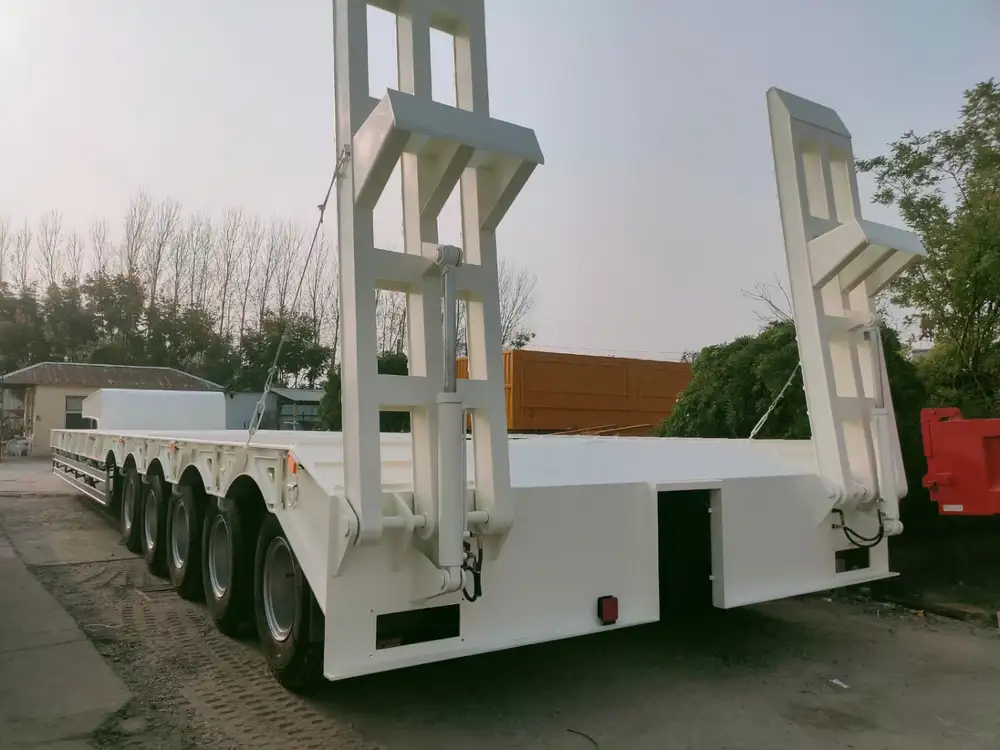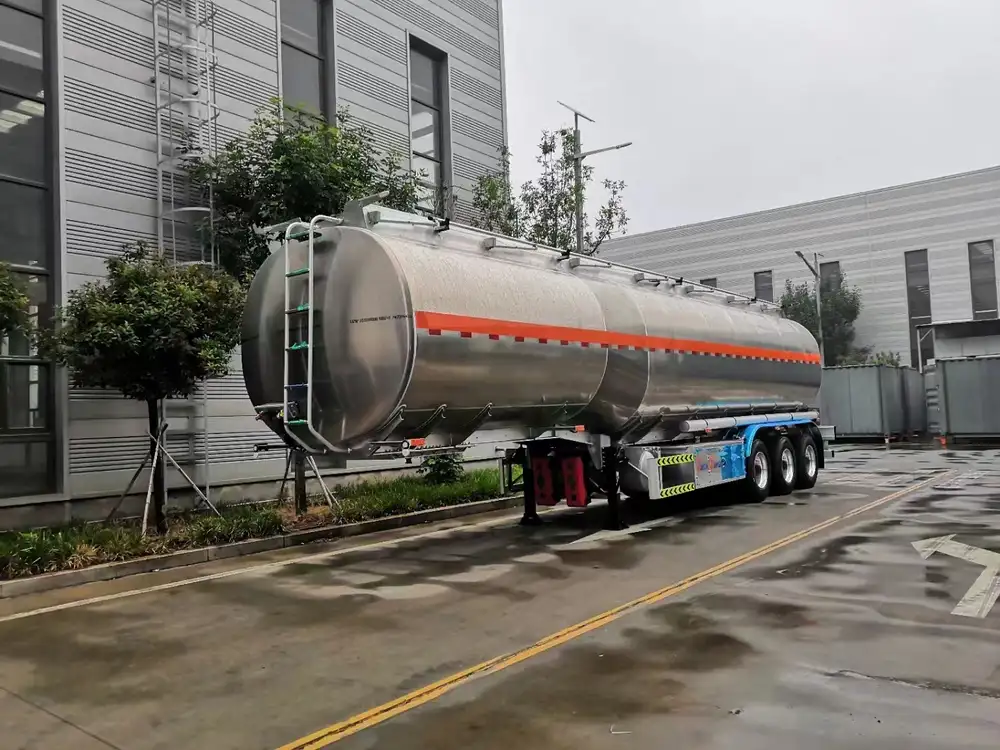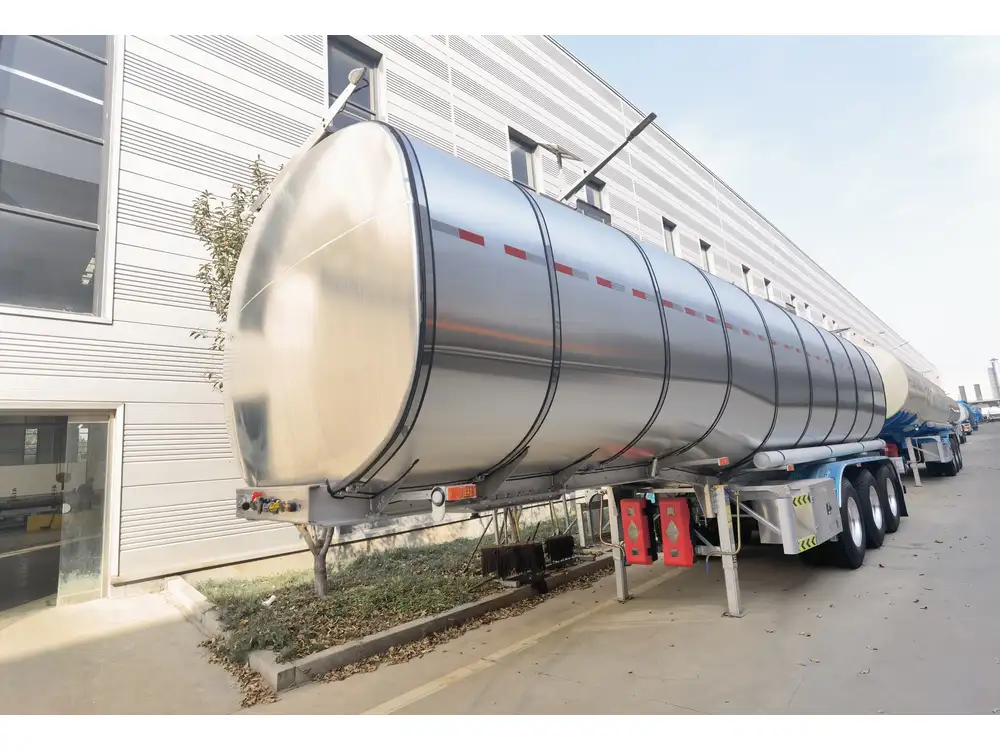In the realm of semi-trailer manufacturing, the term “king box” is pivotal for both manufacturers and consumers alike. This article aims to elucidate the concept of the king box, its significance, and operational mechanics—providing invaluable insights for those involved in logistics, transportation, and trailer manufacturing.
What is a King Box?
The king box, often also referred to as the king pin box, represents a crucial component of a semi-trailer. Positioned at the front part of the trailer, this box houses the king pin, which is the pivotal element that connects the trailer to the tractor unit (the truck). The king pin itself is typically a steel pin that ensures a secure attachment between the trailer and the towing vehicle, enabling the semi-trailer to be moved efficiently and safely.
Structural Composition of the King Box
The design and construction of the king box are fundamental to the overall performance and safety of the semi-trailer. The structural integrity of this component is designed to withstand substantial forces during towing. The primary materials used in the construction of the king box typically include high-strength steel and reinforced composites, providing both durability and resilience.

Materials Used in King Box Construction:
| Material | Purpose | Benefits |
|---|---|---|
| High-Strength Steel | Provides support for the king pin attachment | Exceptional durability and impact resistance |
| Reinforced Composites | Enhances weight distribution | Lighter than steel without compromising strength |
| Anti-Corrosive Coatings | Protects against environmental damage | Increases longevity of the king box |
Importance of the King Box in Semi-Trailers
Enhanced Stability and Control
The king box plays a critical role in maintaining the stability and control of the semi-trailer while in motion. By securely linking the trailer to the tractor, it allows for effective weight distribution and reduces the risk of swaying and tipping during transit. This is particularly essential when navigating sharp turns, uneven terrain, or encountering inclement weather conditions.

Load Capacity Consideration
The design of the king box also directly influences the load capacity of the semi-trailer. A strong and well-designed king box ensures that the trailer can carry substantial loads without compromising the connection to the tractor. This is vital for businesses that rely on transporting heavy goods efficiently and safely.
Safety Features
Modern king boxes integrate various safety features to ensure the secure attachment between the trailer and the towing vehicle. These include:
Locking Mechanisms: Many king boxes now come equipped with advanced locking mechanisms that ensure the king pin remains securely latched during transit.
Wear Indicators: Integrated wear indicators can signal when the king pin or the king box requires maintenance or replacement, enhancing operational safety.
Braking System Compatibility: The king box must also accommodate various braking systems, crucial for maintaining control during heavy loads.
Differences Between King Boxes
When selecting a semi-trailer, understanding the various types of king boxes is essential. The differences often hinge on usage, design, and load requirements. Here’s a comparison of common types:
| Type | Description | Ideal Use Case |
|---|---|---|
| Standard King Box | Basic structure fitted with a king pin | General freight transportation |
| Heavy-Duty King Box | Reinforced for higher payload capacity | Heavy machinery and construction materials |
| Adjustable King Box | Allows alterations in height for couplings | Versatile applications in logistics |

Maintenance Guidelines for King Boxes
To ensure longevity and optimal performance of the king box, adhering to maintenance guidelines is imperative. Neglecting regular inspections can lead to significant operational risks. Here are practical maintenance steps:
Regular Inspections: Perform thorough inspections of the king box and king pin connection at regular intervals to check for signs of wear or corrosion.
Lubrication: Apply the recommended lubricants on the king pin and moving parts of the king box to reduce friction and wear.
Check Tightness: Ensure that all bolts and fittings remain tight, as loosening can cause improper alignment and increased wear.
Replace Worn Parts: Timely replacement of any worn components is critical to maintaining safety and operational performance.
Document Maintenance: Maintain a log of all inspections and maintenance performed, helping track historical performance and facilitating more informed decision-making.
Common Issues Associated with King Boxes
Misalignment
Misalignment between the king box and the tractor can lead to excessive wear on the king pin and ultimately, a potential breakdown. Keeping the towing apparatus properly aligned is crucial for effective operation.

King Pin Wear
Over time, the king pin can experience wear due to repeated coupling and uncoupling. Insufficient lubrication can exacerbate this issue, leading to detrimental effects on handling and control.
Corrosion
Environmental factors, such as moisture and road salts, can lead to corrosion of both the king box and king pin. Implementing protective measures, such as anti-corrosion coatings, is essential for prolonging lifespan.
Innovations in King Box Design
With advancements in technology, the design of king boxes is continually evolving. Here are some emerging trends and innovations in king box design:

Lightweight Materials
Manufacturers are exploring lightweight materials, such as aluminum alloys and high-strength composites, to enhance fuel efficiency while maintaining structural integrity.
Smart Technologies
Integration of sensors and smart technologies into the king box can provide real-time data on its condition—alerting operators to needed maintenance before problems arise.
Modular Designs
Modular king boxes allow for easier replacement and upgrade of components, enhancing flexibility and reducing downtime.

Selecting the Right King Box for Your Needs
When choosing a king box, consider your operational requirements. Here are crucial factors to consider:
Payload Capacity: Ensure that the king box’s design matches the expected payload.
Compatibility: Match the king box with your trucking fleet’s specifications for effective functionality.
Durability Over Time: Investigate the manufacturer’s reputation for durability and reliability, backed with testimonials or case studies.
Cost vs. Benefit: Evaluate the overall cost of a king box against its benefits and potential return on investment over time.
Conclusion
In conclusion, the king box in semi-trailers is not merely a component; it is the linchpin that holds the logistics operation together. Its role in safety, stability, and effective load management cannot be overstated. Understanding the intricacies of king box design and maintenance empowers businesses to enhance their operational efficiency. By investing in high-quality king boxes and implementing rigorous maintenance protocols, companies can ensure reliability and safety in their transportation operations.
Making the right choice in trailer components like the king box can significantly impact both performance and profitability, ensuring that your operations remain smooth and efficient in an increasingly competitive logistics landscape. As the industry evolves, staying informed about innovations and best practices will ensure that your business remains at the forefront of semi-trailer technology.



